By Andrew Mefferd
Preorder and social-distancing seedling sales
It just got harder to sell something that demand is spiking for: seedlings. One of the things we do on my farm every year is to sell a lot of seedlings. We’ve always sold vegetable and flower starts to get the cash flowing in the springtime, and this really took off when my wife Ann took over the nursery business from an established grower, which is now called Seedlings by Annie onedropfarm.com/seedlings-by-annie/.
Just like every other local grower I’ve talked to, demand is spiking for us. Luckily, we have had online preordered seedling sales since before the crisis, so we didn’t have to set it up under duress.
Normally, preorders stop March 31, but this year due to the demand Annie left them open until April 15. By that time, she had received three times as many orders as last year! So she’s been planting more of everything that can still be started at this late date. Here in Maine the traditional time for people to plant their gardens is Memorial Day Weekend so we’ve still got some lead time.
The way Annie does preorders has some advantages in the current situation. For one thing, customers pay up front, starting as early as January first when the online store goes live every year. It may be too late for some people this year, but if you need cash upfront to deal with disruptions and have a lot of seedlings to sell, you could try pre-selling them online.
The way she does the preorder is that the farm is normally open for walk-in retail customers from mid-May to mid-June. Customers who have preordered have a week at the end of May when they’re supposed to come get their preorders.
Before the preorder customers show up during their week-long pickup window, Annie pulls their exact order into a black bulb crate, so when they show up their whole order is available with no hunting around. At that point she transfers the plants to cardboard flats that we get for free from our local beverage mart for the customer to transport home.
In the past, we have also had a retail greenhouse with individual plants and six-packs available. A lot of preorder customers would look around and pick out a few more plants after picking up their preorders.
Now we are trying to figure out if we can even do that anymore, and if so how to sell plants from a greenhouse with only one entrance and exit while maintaining social distancing. We’ll probably ask customers to schedule a pickup time, so there aren’t too many customers at once, and bring customers’ orders out to at their cars. We’ll let you know what we come up with.
Even if it’s too late for this kind of system for you this year, if you’re putting the rest of your catalog online, consider listing them next spring, or this summer if you’re in an area where fall gardening is popular. You can go to http://onedropfarm.com/seedlings-by-annie/ to see how our online store works for the seedlings. The website is a custom Wordpress website with Woo Commerce store plugin, though any kind of store or even a Google doc could work to facilitate online sales.
Skowhegan farmers market custom order curbside pickup bags
In another example from close to home, my farmers market here in Skowhegan, Maine just started doing preordered online custom bags. They put the entire inventory of the farmers market online for preorder in a custom curbside pickup bag.
Customers can also order a “market mixed bag,” with one item from each farm at the market, almost like a market-wide CSA box. At this point that is going for $61.50.
Each vendor in the market provides a list of what is available, which is made public through the website at https://www.skowheganfarmersmarket.com/shop. Orders are closed on Thursday at 10 am, except for this past week when they maxed out at 50 orders by early Wednesday afternoon and shut down the form.
Customers have an hour during regular farmers market hours to get their preorder bags from their cars in a designated pickup lane behind the market. Volunteers bring the orders over to customers and take payment.
I wanted to know how they got the program together over the course of just a couple days, so I got the women who made it happen on the phone. Amy Rowbottom is the Skowhegan Farmers Market Manager and also a market vendor as the owner/cheesemaker at Crooked Face Creamery https://www.upnorthricotta.com. Emily is the Chief of Staff at Maine Grains, a local-grain grist mill in the heart of town https://mainegrains.com. The farmers market takes place in the Maine Grains parking lot.
“So you took the Skowhegan farmer's market, and over the course of a couple of days, put it online?” I asked.
“I had already built a website in Squarespace. So, when this all was coming to a head, we had to make some decisions on how to best accommodate our customers during this time. We were getting emails with best practices on social distancing, wearing masks and gloves, not allowing customers to touch the products, only allowing one person in a booth at a time, asking customers to only send one member of their family, et cetera. And then the pre-order idea came up and there are a few platforms that Emily looked at,” said Amy.
“There are some platforms designed for markets to move to online orders, but it's tricky, because all the vendors have to participate online individually, and update their own inventory. So, as a simpler option, Emily looked into an online form we already had up and running. It would be a lot faster to get it set up.”
“And we decided not to accept online payments, because we can't necessarily track inventory, and also some products, like meat, are hard to do prepay because steaks are all different weights. And like I said, we wanted to get this up and running fast. And so Emily found this great form on Squarespace and, and it took you what? Two days to get everybody's information and everything up and running?” asked Amy.
“Yes that’s about the timeline, and it's definitely not a perfect system by any means. We're still working out the tweaks. But I like this system because it includes everybody and allows a one-stop shopping experience for the customer. And I know from the feedback that Amy's been getting, customers are really happy about it and think it's great,” said Emily.
“Is it a standard form in Squarespace, or a specialized plug-in?” I asked.
“It's not a special plug-in, no. It's just a standard form. It's not the most elegant solution, I will say,” said Emily.
“The reason we chose to do this form is because of our vendors. We could have just done a standard shop in Squarespace where things are much more streamlined and user-friendly in terms of accepting payment, which Squarespace is already set up to do. But we didn't want to do online payments.”
“If we did accept online payments, another issue would be keeping track of inventory. That would demand a lot of the vendors, because inventory sometimes fluctuates week-to-week, and that's hard to keep track of. I can't imagine having to deal with a refund for someone who ordered something that sold out. And then we’d have to go back, backtrack and refund money. That's just a whole added dimension of work and stress we didn’t want to get into,” said Amy.
“The farmer community is a mix of computer abilities. So, what we found is that just giving them an Excel spreadsheet, they couldn't deal with that. For some people that would be very simple, and for others it was very complicated,” said Emily.
“So we had to figure out how to make this information usable and readable for the farmers, which just meant manipulating that data for them. But it adds a whole other piece to the whole thing.”
“So do you break it down for each grower, and end up just sending them a list of what they need to drop off for the pre-order consolidation?” I asked.
“Yes, it just outlines the person's name, their phone number, their email address, and then exactly what they ordered with each farm name associated with what they ordered, so that it's really clear. Last week we did individual PDFs of each order that Amy printed, and then stapled them to the bags,” said Emily.
“And then there was also a master PDF that we sent out to all the farmers that listed each order, but in a really clear, streamlined way so the only information they're seeing is exactly what somebody ordered with the farm name, instead of a bunch of other data that that doesn't pertain to them,” said Emily.
“This situation has been all-consuming. We're just trying to learn, week by week, how to improve the system that we have. But the customers love this form. They think the form is great. The first week was a little difficult because it would drop all the data from the preorders into a Google spreadsheet and it was really long. And if you don't really know how to manipulate those spreadsheets, they can be hard to read. But then Emily was able to condense the orders in a much more user-friendly format for the farmers,” said Amy.
“The way the system works is Emily emails the preorder data to me. I then email it to the vendors, so they know what was preordered, and print off all the orders. We get the bags ready, and then we have volunteers packing the orders early, probably an hour before the market starts,” said Amy.
“Essentially that's our plan this week, because last week we had farmers show up late because of power outages, and we were packing bags as people were lining up to pick up and it was pretty stressful. This week we're going to try to get a jump on it and do some things on Friday to get the bags ready. So, Saturday it's a little bit more streamlined. Yeah, it's a learning process. We'd really like to get the system down where people aren't changing what they have every week, because it takes a lot of time to go back in and update the order form,” said Amy.
“This week we're trying to get it a little bit more nailed down. We decided to make the pickup time a half hour later, because last weekend we had two fewer volunteers, and so farmers were trying to pack the preorder bags, and there were 20 preorder customers already there at 10:00 AM sharp to pick up their stuff. We need to give ourselves a little more time.”
“So, this week we’re going to make the pickup time from 10:30 to 11:30. But we still have to consolidate the orders in a short period of time, because of frozen meat and other perishables. We don't have a walk-in cooler where we can store all this stuff until people come.”
“We really have to keep the window of time to pick up pretty short, so they don't worry about frozen foods defrosting, or the food safety risk of things sitting out. Especially when it warms up. I'm worried about how we're going to have to shift this and change the system when we're dealing with warmer temperatures. But we’re taking it one day at a time,” said Amy.
“This week we had one vendor that heard about the success of this preorder system and wants to join the market early. She usually doesn't start until May, but she wants to be part of it now, based on the success. After market on Saturday, I'm just asking everybody to regroup and send me any changes that they have to their product list.”
“And then we've been trying to go live with the preorder form on Monday, at some point. By Monday evening at the latest after we get all the changes made. And then the customers have until Thursday at 10:00 AM to place their order. And then we have Thursday and Friday to consolidate those orders and get them out to the farmers.”
The first week there were 20 preorders, the next week there were over 40, and then this past week is when it sold out with 50 preorders between Monday and Wednesday.
“It's nice for the farmers. I like the preorders, because then I know exactly how much to set aside for preorder customers, and how much I can set aside to sell direct from the shop. I'm not allowing people in my shop right now, but I have a table at the door, and then I go get what they need and work it that way.”
“And this time of year is usually really tough. March and April, we struggle through those months where we don't have a lot of customers. And that's certainly not the case this year. There's definitely a demand for it. I couldn't believe the line of people, and how much the orders increased in the course of a week,” said Amy.
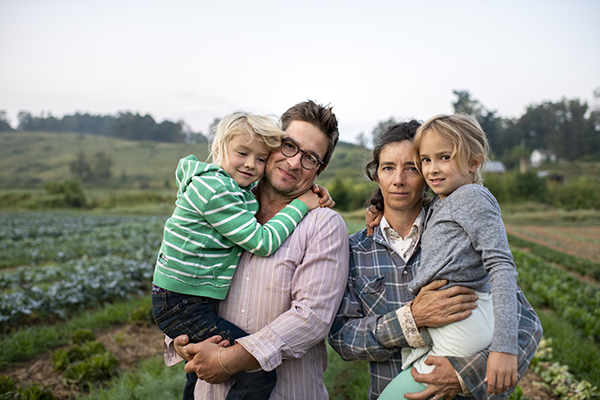
Gaining Ground Farm and We Give a Share
Aaron Grier from Gaining Ground Farm contacted us about a new program in Asheville, North Carolina called We Give a Share. It is a way for people to donate money that will go to local farmers to deliver food that will be used to feed the underserved in the community.
“In normal times, Gaining Ground Farm grows 12 to 14 acres of diversified vegetables. We also do a little bit of heirloom grains, one to two acres that we get turned into flour,” said Aaron.
“We are non-certified organic. We sell to 12 to 20 restaurants a week, at the height of the season, twice a week. We're going to two different tailgate markets in downtown Asheville from April 1st till Christmas time. In a normal year we will have a 25 member CSA, but most of our sales are done through the tailgate markets and restaurant accounts.”
With restaurant business collapsing everywhere, Gaining Ground had to figure out how to keep selling produce without some of their main outlets. With demand for CSA so high, they considered expanding their CSA program, but then realized they just weren’t tooled up for the logistics of a bigger CSA.
While talking with some of the chefs that Gaining Ground works with, Aaron came up with the framework for We Give a Share to facilitate donations to help feed Asheville’s most vulnerable communities. Donations go to the Asheville Housing Authority, a nonprofit, which pays the farmers to deliver produce to its kitchen, The Southside Kitchen, where it is prepared by the chefs.
As their website explains, “Similar to a CSA subscription… We Give A Share offers supporters an opportunity to buy a nominal ‘share’ of the farm dedicated to growing specifically for the Southside Kitchen. Local farms will deliver fresh organic produce to the chefs at the kitchen weekly so their community meals are as nutritious and delicious as possible. Deliveries will be limited types of vegetables but in large volume in order to provide the farm with efficient and productive usage.”
“Shareholders will receive weekly newsletters about the farm and what’s being produced, delivered and cooked at Southside Kitchen. The team is already at work building a sustainable framework for the program in the hopes it can be replicated in other communities as well as continue to thrive and grow in Asheville for years to come.”
“The farm is very much my wife's. When we got married and in 2007, I went to work for her. She's been selling vegetables in downtown Asheville since 1998, so she's very much the brains and the brawn of the farm. I'm the resident naysayer, just like, ‘Oh my gosh, how are we going to make this work?’ We work for her, she's our guiding light. This program feels a little bit strange just because I'm the one who’s pushing it, but we’ve all got to play our roles,” said Aaron.
“The South Side Kitchen is owned by the Asheville Housing Authority. It's a 501(c)(3) [nonprofit organization]. It has been used as a training kitchen where people can come through there and learn the skills to work in a kitchen and then go on and work in restaurants in Asheville. It’s been closed, and they were already scheduled to fire the kitchen back up in July, and with the pandemic coming or shutting everybody down, they saw a real need to get it going immediately.”
“In my conversations with these chefs that I have a relationship with, I’ve just thought, ‘You guys are amazing. Your businesses are crumbling, and you are putting all your efforts into this."
Once they figured out how it could work from the farming angle, they approached the housing authority. "And the housing authority immediately said, ‘Yes, we will be the pass through so that people get a tax write off, and then very quickly we had a website, and a videographer who I'd never met signed on and agreed to help for free," said Aaron.
“That's really the way that it all started up. So yes, the housing authority is who's taking the money and then they'll pay the farms, which will be us and another farm, Flying Cloud Farm in Fairview. For this year, we're bigger, more established farms to where we know that we can pull off whatever CSA shares are sold. Then the responsibility is really on our shoulders to keep track of that, understand it in a way that where we can pass that knowledge on to people who aren't as big and established for next year.”
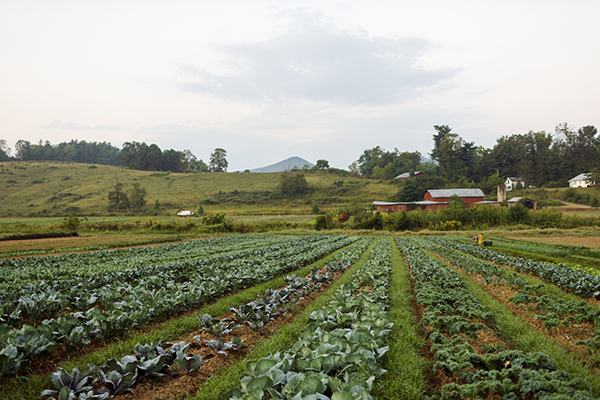
“We were already geared up to sell to 10 to 20 restaurants twice a week in downtown Asheville and so our production is such that we can fold this in. There's definitely going to be a conversation that needs to be had between the chefs and me as far as what the farm can produce and bring you that they can use efficiently, because we don't want to become a bottleneck in what they're doing. We do have to have that conversation with them about what they need, but I'm confident and it's early enough in the season to where we can make those adjustments.”
“We don't want to take away from what they're doing, so it's going to be like, ‘What do you guys want?’ We're already growing massive amounts of potatoes and sweet potatoes and peppers and tomatoes, squash, and cucumbers.”
“That's the other practicality from the farmer's point of view- that we're delivering and unloading a van and we're driving away. We're not standing in a parking lot for four to six hours making sure that everybody picked up their CSA box. Because our inboxes are flooded by everybody who wants a CSA and, yes, we grow enough produce. But my wife Anne, and I were just like, ‘We can't do that efficiently. We'll run ourselves into the ground.’”
“Now we've had however many Zoom meetings between all the farmers here and everybody's building online stores, and meeting in parking lots around town. But it's just, it's terrifying honestly, because in a normal year you go post up at the tailgate market and you knock down $5,000-$6,000 and you go home. But to try to do online sales with all these individual boxes, and so then you're sorting through specific orders...Yeah, man, all those logistics are terrifying to me.”
“The website just went live on Saturday afternoon. We haven't started pushing it yet really. I haven't put anything out on social media yet or anything like that. There was an email that went around from a couple of the other people that were involved, and it raised $10,000 maybe by sometime yesterday [Sunday],” said Aaron.
“I think that selling these shares this year is an easy thing. I think people want to be involved. They want to feel like they're making a difference as they hunker down and self-isolate. I think that us really getting the framework right this year is the real hurdle and the real responsibility to make sure that it continues.”
“Since putting this out a lot of people have been emailing me with similar programs that are popping up and similar programs that have been there for years. I think that the only thing that really is different or unique about this is that the growers, and the farms that are involved in this program will have that guaranteed sale from the beginning and that we're going to be growing conscientiously for the South Side Kitchen.”
“Also, from the farming point of view, compared to a traditional CSA model, this allows us the efficiency of harvesting three or four crops a week that go in bulk and that aren't individually boxed. We don’t have to deal with those hundreds of boxes, and those emails that go back and forth where somebody is out of town or somebody else who's going to pick up this week or we don't actually want the squash, we won’t have to deal with those things that you deal with in a traditional CSA.”
“We wouldn't expand a hundred shares worth of individual CSAs. I think that we would just run ourselves into the ground, but this program will allow us to expand a hundred CSA shares worth of produce because of the efficiency of it. That's the part from the farming angle and business sustainability angle that I'm excited about. This is building those relationships with individuals who are buying shares. This is building relationships with the farming community and the underserved, but there's also an efficiency to it to where it makes business sense from the farmer's point of view.”
“What we're going to do now that we've got this set up in the Asheville area is that I'm going to contact the other farms here that have CSA programs and ask that they email this program out to their members. Eventually it'd be nice if it were like, if you're an Asheville area CSA farm, let's say that you are a participant in the We Give a Share program, and a member adds an extra $25 or $50 to their CSA share, and that goes to We Give a Share, I think there's some traction there that could be gained.”
“In the big picture, what I see is for our farm to step away from this and facilitate new and beginning farmers growing these shares. Because if we can figure out the framework, what a lift for a new grower that could be. If you were a beginning farmer, and could get 10 or $20,000 worth of CSA shares that you're growing for the South Side Kitchen. That's another farming angle where I think, ‘This would be a good way to plug new and beginning farmers in and give them a little bit of stability as they gain traction.’”
“But I do think, one of the big questions is, does this work from a business standpoint for a small farm? Or is this just like chasing your tail? I think that the efficiency of growing and delivering in this manner, I think it has real efficient attributes that seem sustainable.”
“A lot of it depends on the relationships that people have or are able to form. I wouldn't have been able to just pull this off had I not had these years and decades long relationships with these guys, but I am excited. Like John [Fleer], the chef from restaurant Rhubarb, really makes the point that beyond what this is doing as far as just putting fresh food on people's plates, it is also able to transcend the niche view of tailgate market vegetables and who they're available to. His whole thing is just bridging and forging relationships between these different communities. I'm excited about that.”
“Now, we're getting a good response and I think the real test will be next year. I think this year, this is a good thing, people are into it. I think people are going to put their weight behind it, and I'm excited that we're going to be able to grow and Flying Cloud is going to be able to grow for the South Side Kitchen. Then I think, really, the test of this program will be next year.
“My angle is, ‘Let's build this relationship and let's make it something that's really helping everybody, like the new and beginning farmers and the underserved.’ What a cool bridge that could be. That's our real challenge, to make sure this stays relevant in the years that aren't so bizarre,” said Aaron.
For more information, go to https://www.wegiveashare.org.
Do you have an idea that is helping you stay in business and healthy through the COVID pandemic? Email us with your idea as we keep up with this rapidly developing story.
Andrew Mefferd is the Editor of Growing for Market. He farms in Maine.

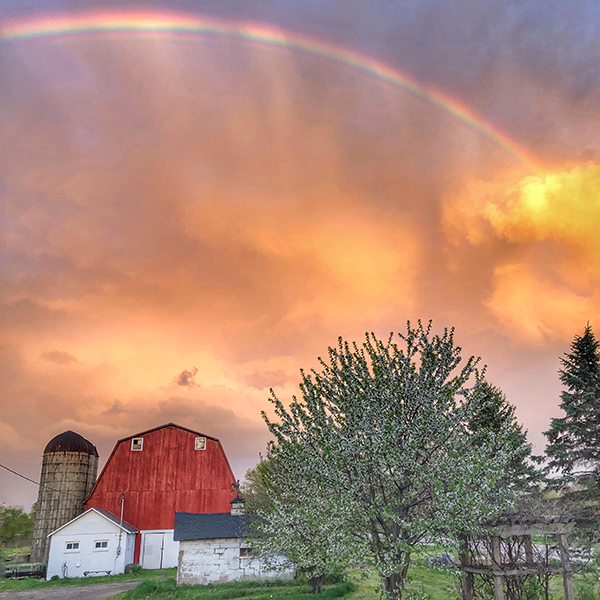 Settle in, the changes aren't just for the short term
Settle in, the changes aren't just for the short term
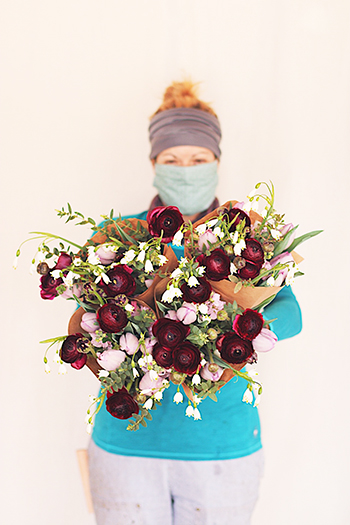 Practical advice on what’s working to replace lost business
Practical advice on what’s working to replace lost business

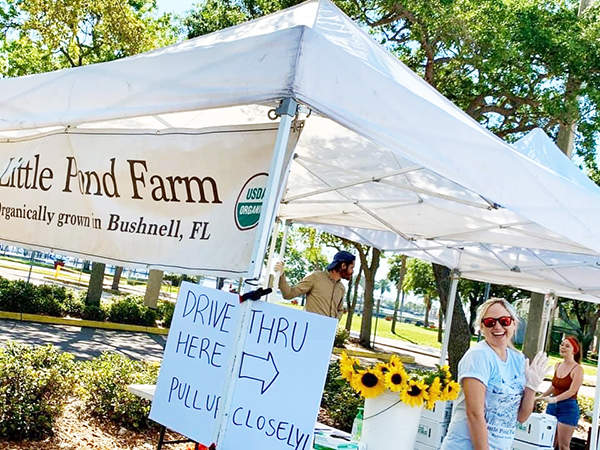 It became clear in March that the COVID-19 outbreak would disrupt almost every facet of life. So, we reached out to growers, asking for constructive ways they were keeping business going as safely as possible during the pandemic to share with you.
It became clear in March that the COVID-19 outbreak would disrupt almost every facet of life. So, we reached out to growers, asking for constructive ways they were keeping business going as safely as possible during the pandemic to share with you.
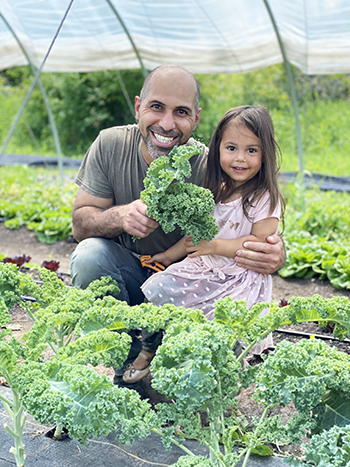

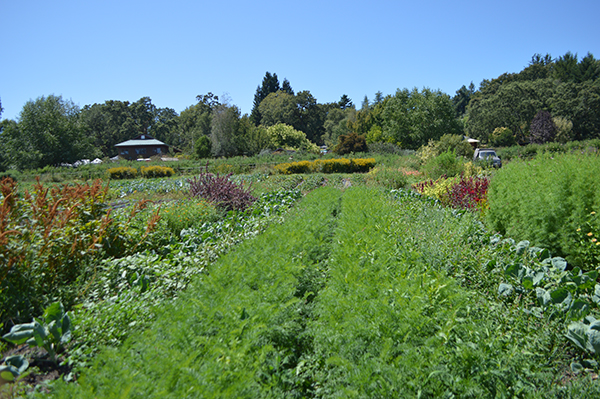 Farmer to Farmer Profile
Farmer to Farmer Profile
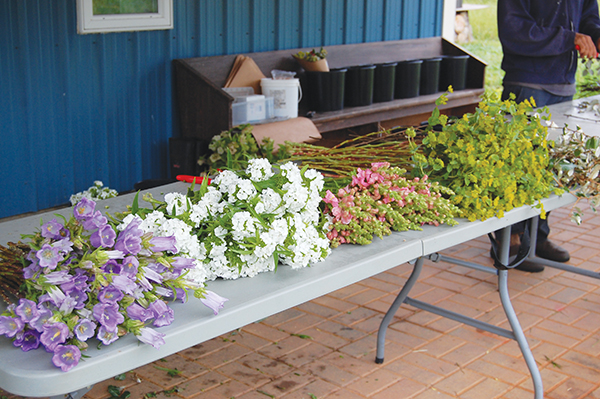 Why is the flower micro-farm best suited to a laser focus on one or two enterprises versus a balance of several? It is because of the long maturity of flower crops and the specific and conflicting demands of different types of flower enterprises. For example, some of the most common ways for farms to sell their flowers are at a farmers market, wholesale, from a flower stand/truck, a CSA, and weddings/events. These outlets can be compared on their need for similar types and quantities of flowers.
Why is the flower micro-farm best suited to a laser focus on one or two enterprises versus a balance of several? It is because of the long maturity of flower crops and the specific and conflicting demands of different types of flower enterprises. For example, some of the most common ways for farms to sell their flowers are at a farmers market, wholesale, from a flower stand/truck, a CSA, and weddings/events. These outlets can be compared on their need for similar types and quantities of flowers.
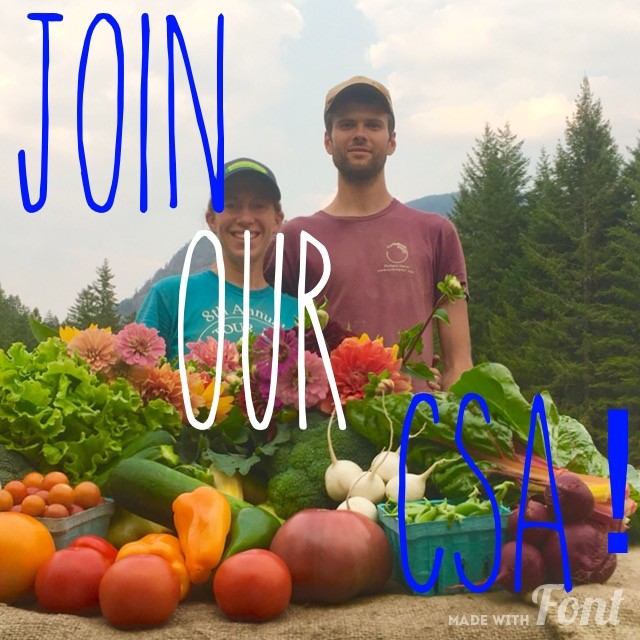


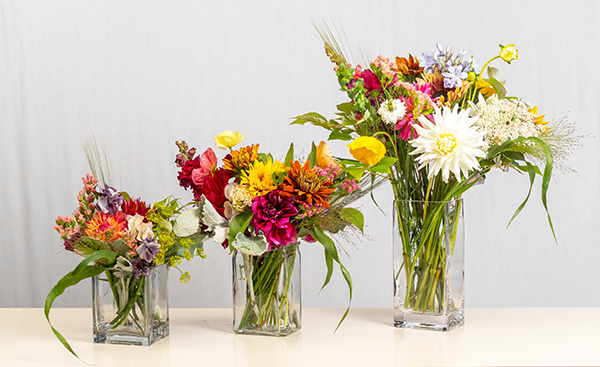 For most established growers, the easiest place to start selling flowers will be mixed bouquets and single stem/small bunch retail sales. These are the flowers you can sell to your existing customers and they are easy to incorporate into farmers market, CSA, and grocery sales. But there are lots of other outlets out there, including florists, weddings and events, business subscriptions, value added products, and wholesalers.
For most established growers, the easiest place to start selling flowers will be mixed bouquets and single stem/small bunch retail sales. These are the flowers you can sell to your existing customers and they are easy to incorporate into farmers market, CSA, and grocery sales. But there are lots of other outlets out there, including florists, weddings and events, business subscriptions, value added products, and wholesalers.
 I made a trek out to Wisconsin in June. I’ve been lucky enough to visit this gorgeous state a few times, and I was glad to return. Wisconsin is the state with the second most organic acres in the country, behind California. It’s been an important crucible for the organic ag movement since the beginning. Out of the 177 of Chris Blanchard’s Farmer to Farmer podcasts, 21 featured Wisconsin-based businesses. From that list I chose two farms to visit and interview for this column.
I made a trek out to Wisconsin in June. I’ve been lucky enough to visit this gorgeous state a few times, and I was glad to return. Wisconsin is the state with the second most organic acres in the country, behind California. It’s been an important crucible for the organic ag movement since the beginning. Out of the 177 of Chris Blanchard’s Farmer to Farmer podcasts, 21 featured Wisconsin-based businesses. From that list I chose two farms to visit and interview for this column. 
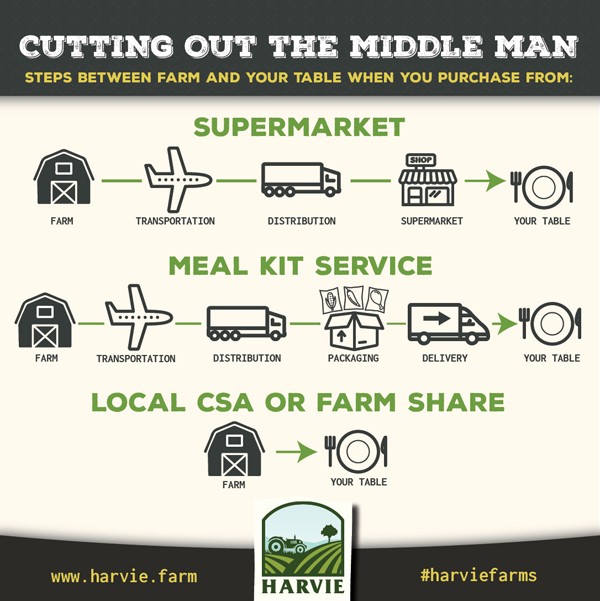 “CSA is dead” is a refrain I have heard from multiple farms in the past few years. I started to hear rumblings of a problem with the CSA model in 2014 through the CSA Farmer Discussion group that I manage on Facebook which brings together over 2,500 CSA farmers from all over the world. Farmers reported that they were having trouble attracting and retaining membership.
“CSA is dead” is a refrain I have heard from multiple farms in the past few years. I started to hear rumblings of a problem with the CSA model in 2014 through the CSA Farmer Discussion group that I manage on Facebook which brings together over 2,500 CSA farmers from all over the world. Farmers reported that they were having trouble attracting and retaining membership..jpg)
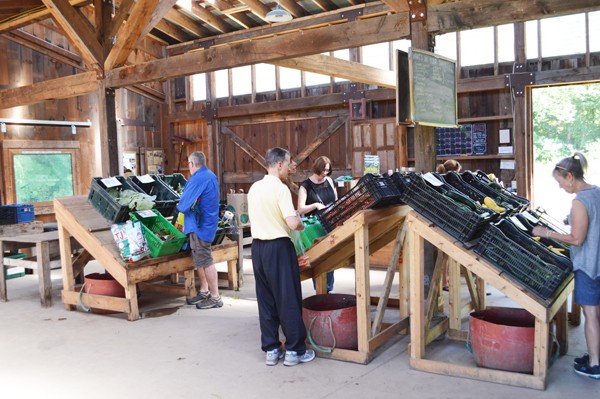 It’s an incredibly cool, clear and dry July day in Massachusetts as I make my way to Brookfield Farm. Dan has arranged for me to visit at 2PM on a Thursday so I can see this bustling CSA farm at distribution time. I arrive just before the appointed hour, and see the last details of the setup being handled by apprentice Ellen. Dan and Karen are bustling around the corner, checking that the room is ready for the deluge of customers to come.
It’s an incredibly cool, clear and dry July day in Massachusetts as I make my way to Brookfield Farm. Dan has arranged for me to visit at 2PM on a Thursday so I can see this bustling CSA farm at distribution time. I arrive just before the appointed hour, and see the last details of the setup being handled by apprentice Ellen. Dan and Karen are bustling around the corner, checking that the room is ready for the deluge of customers to come. 
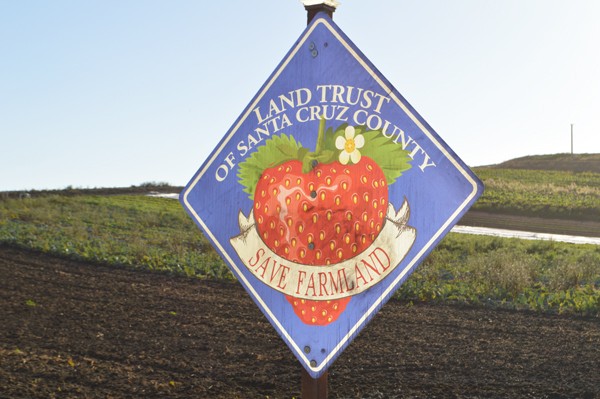 Getting to High Ground Organics means going through the belly of the beast of California’s agricultural sweet spot – the Central Coast. This is where high value crops are grown right to the property line, right next to towns and suburbs, cheek by jowl. The proximity to the Pacific Ocean mitigates the climate of this region so it’s never that hot and never that cold; they can grow and harvest strawberries from March to October.
Getting to High Ground Organics means going through the belly of the beast of California’s agricultural sweet spot – the Central Coast. This is where high value crops are grown right to the property line, right next to towns and suburbs, cheek by jowl. The proximity to the Pacific Ocean mitigates the climate of this region so it’s never that hot and never that cold; they can grow and harvest strawberries from March to October. 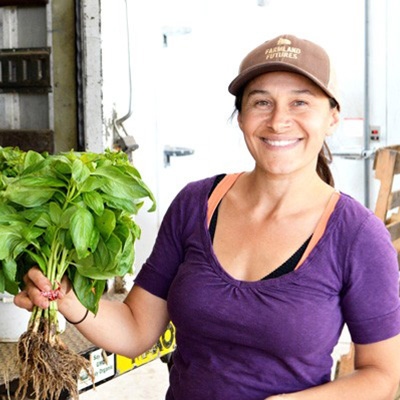
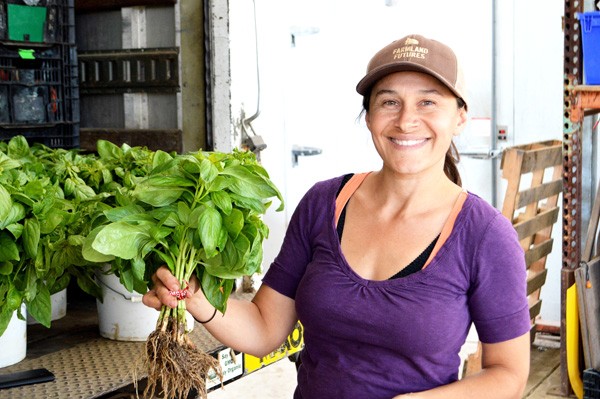 Fifth Crow Farm lies nestled below some ragged hills – the native grass fully brown, the oaks wide and green. The farm grows 50 acres of certified organic crops on 150 acres of leased land, including vegetables, cut flowers, dry beans and eggs. The farm land is completely flat, tucked in a tiny valley in zone 9B. Believe it or not, just across the street, a mere two miles from the ocean, there are acres and acres of open land with cows grazing. How can land so close to such beauty, and with such a wonderful growing season be devoid of development? The answer is complicated, but mostly it’s because the parcels of land have always been quite large, and much of it is being purchased for conservation purposes.
Fifth Crow Farm lies nestled below some ragged hills – the native grass fully brown, the oaks wide and green. The farm grows 50 acres of certified organic crops on 150 acres of leased land, including vegetables, cut flowers, dry beans and eggs. The farm land is completely flat, tucked in a tiny valley in zone 9B. Believe it or not, just across the street, a mere two miles from the ocean, there are acres and acres of open land with cows grazing. How can land so close to such beauty, and with such a wonderful growing season be devoid of development? The answer is complicated, but mostly it’s because the parcels of land have always been quite large, and much of it is being purchased for conservation purposes.